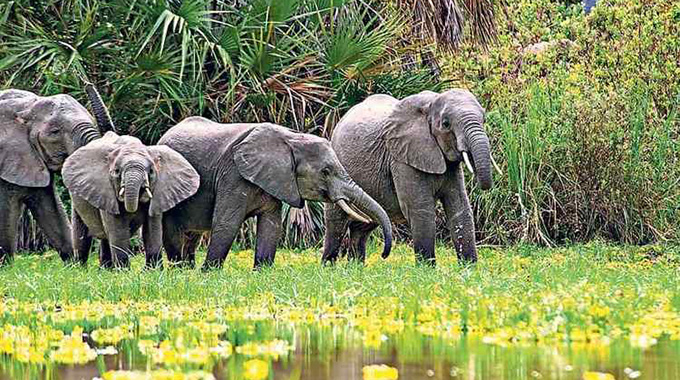Editorial Comment: Zim needs sustainable conservation systems

The debate on the inaugural African Union and United Nations Wildlife Economy Summit is critical in proffering lasting solutions to the human-wildlife conflict that have been at the centre stage of conservation issues in the region.
The summit is important because wildlife and natural conservation issues have become the subject of intense debate, amid concern over the growing population of wild animals particularly elephants in Southern African.
The region wants long lasting solutions to illegal and legal trade, human-wildlife conflict as well as establishing a common ground on concrete interventions to address current challenges posed.
In Zimbabwe, the human-wildlife interactions have not been positive and ideal, as many would have wanted. They have been characterised by despair, anguish and trauma, with people losing their lives in communities that border wildlife conservancy areas.
Already the reports are too numerous to mention of villagers who were gored to death, crops and water points destroyed as both human and wild animals fought for the limited turf.
The problem has become magnanimous because of the unabated growth of elephants against the available space for their upkeep and sustenance. Suffice to say nothing has been done to curtail the growth because of the ban enforced by the Convention on International Trade on Endangered Species (CITES).
The conditions for trade in elephants and their derivatives have been quite emotive with onerous conditions being placed upon those countries whose elephant populations are currently on Appendix II.
CITES listed elephants under Appendix II — where Zimbabwe is — meaning these animals are not necessarily threatened by extinction, but their trade requires control to avoid use that would interfere with their survival.
As a result they have been intense debates over such a decision, with contestations being put on the public forum on whether the wildlife concerns should precede over human lives.
Numerous they may have been, these discussions have not yielded much on what should be done to balance the scales between wildlife and several human considerations.
According to available statistics, Southern Africa is home to the largest population of elephants on the continent, with over 50 percent of these elephants found within the Kavango Zambezi Transfrontier Conservation Area.
Such a huge population of elephants in addition to other wild animals such as rhinos are already posing a serious threat to human life and the environment, notwithstanding the costs associated in keeping such a huge herd.
For instance the Hwange National Park, which is about 14 700 square kilometres — the size of Belgium — currently has more than 35 000 elephants, yet it can only carry 14 000.
With no river flowing through the game park, the national park has to pump more than 550 000 litres of water a day to be used by the wildlife. Even the pressure that such a huge herd puts on the environment is unimaginable, never mind the daily threats to human lives, that has already been catastrophic in recent years.
In the last five years more than 200 people have been killed in human-wildlife with over 7 000 hectares having been destroyed in the last five years nationally. It is in light of such unfortunate situations that the region would need to expedite proper conservative initiatives, to avert further loss of lives.
Cites would need to reconsider its position and allow for the ivory and rhino trade to decongest wildlife conservancies that are already operating beyond their normal capacity.
We therefore support President Mnangagwa’s call on Cites to take a developmental approach which promotes a balance between conservation and sustainable utilisation.
“We call upon the institution to resist the temptation of being a ‘policing institution’ and instead be a developmental one which promotes the intricate balance between conservation and sustainable utilisation of wildlife resources,” said President Mnangagwa during the official opening of the summit this week.
We are already sitting on ivory and rhino stockpiles worth US$600 million which the President rightly said can be used to support several conservation of wildlife natural resources projects for the next two decades.
Zimbabwe and the region at large can still earn a lot of money through live sales of elephants, which are currently not being done because of the standing Cites ban.
With the bloc struggling to create employment for its population, eradicate poverty and come up with broad-based empowerment programmes, proceeds from wildlife and natural conservation should be used to aid the cause.
We believe that will soon be achieved, looking at the unity of purpose being displayed by the heads of states to deal with the problem, by convening for such meetings.










Comments